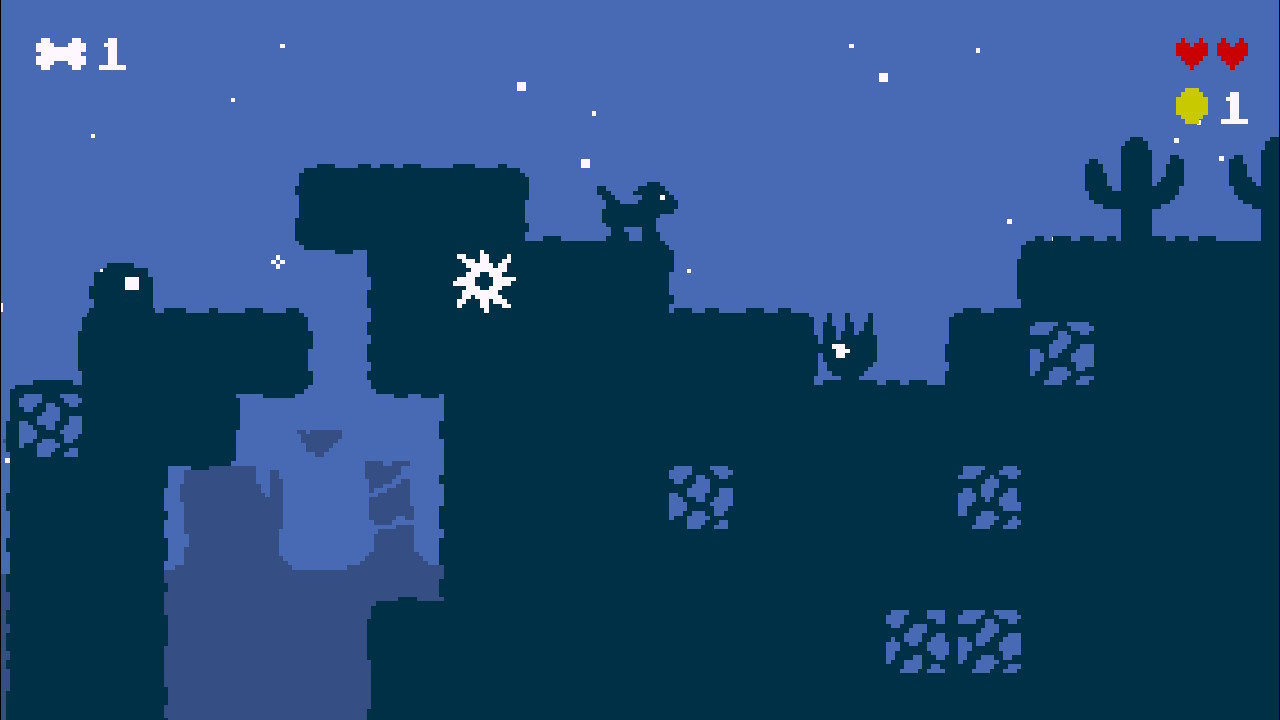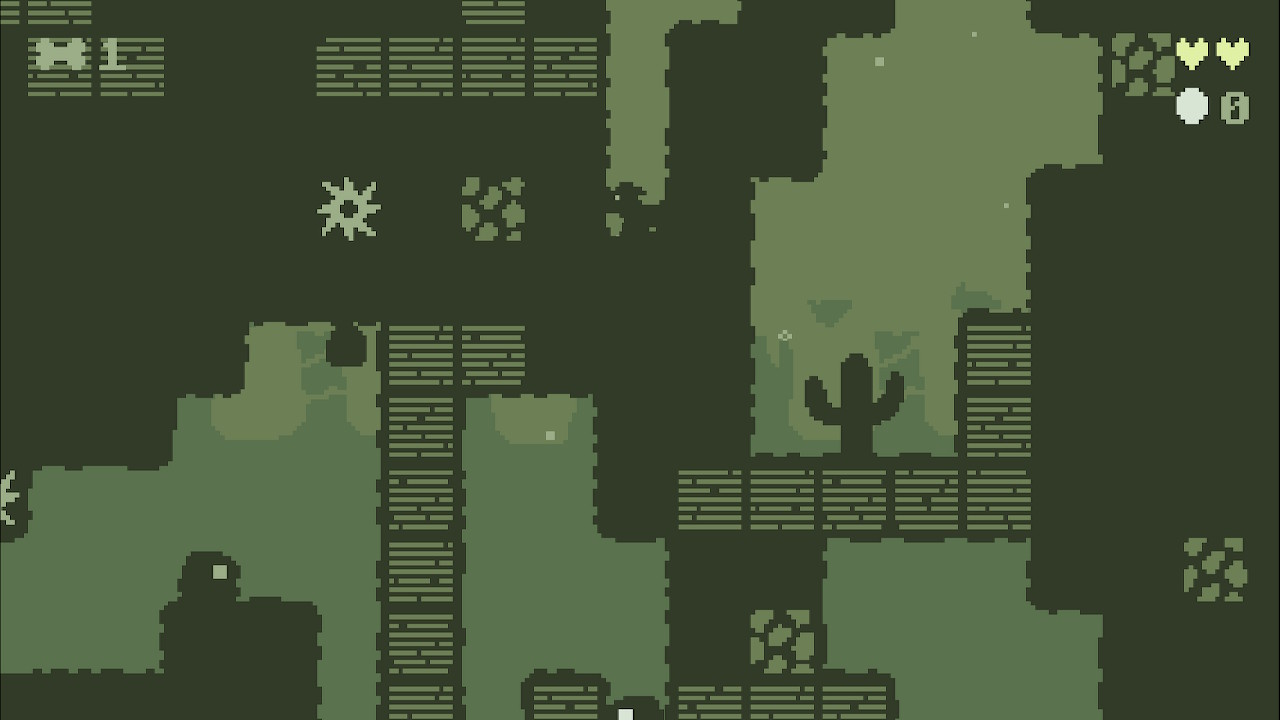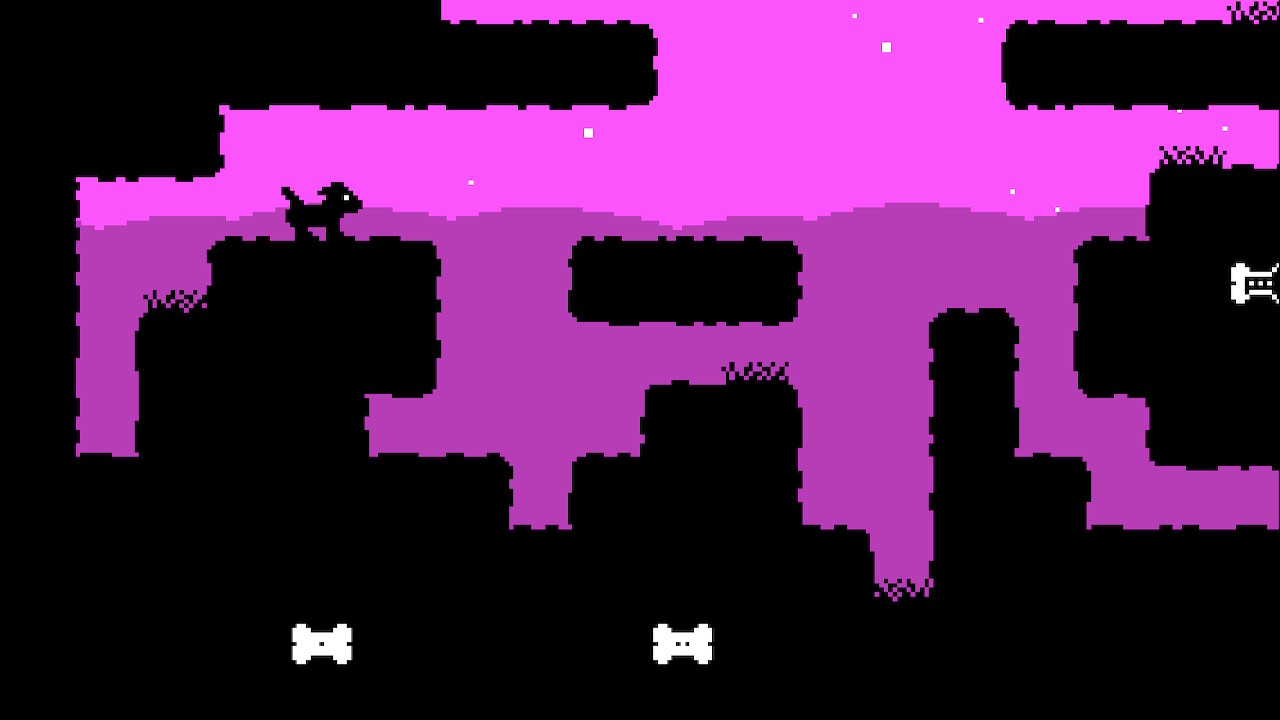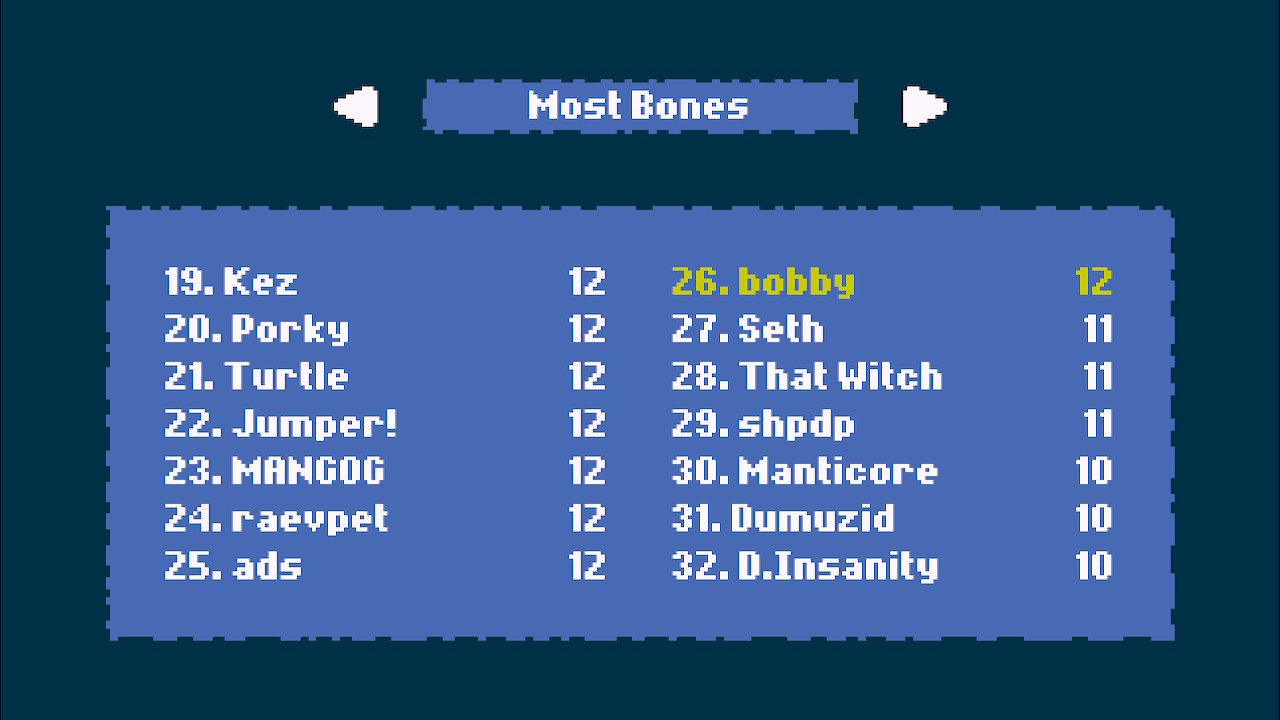Dig Dog
Dig Dog is a fast-paced, perfectly-pitched rogue-lite, offering an addictive slice of nostalgia
Right from the title screen, Dig Dog announces itself as a work of great affection for the past, specifically for the golden age of video-gaming. Big blocky pixels, bright colours from a small palette, rhythmic chiptunes; the game calls back to 80s arcade games (and their home computer ports) more than anything. Dig Dug is the obvious title to draw comparison with.

The main gameplay here is straightforward enough to explain quickly. Each level is maybe one-and-a-half screens wide, and three or four screens tall. You (as the titular Dog) start at the top, and have to make your way to the single bone contained underground, somewhere near the bottom. Dig towards it, in various directions; avoid the enemies and static hazards; touch the bone, and progress to the next level.
Unsurprisingly, the game relies heavily (almost exclusively) on the digging mechanic most recently revisited by games such as SteamWorld Dig 2. However, although I felt the mining was underused in that otherwise excellent game, here it shines. It has to really, there’s nowhere else for this game to hide if it doesn’t get the digging absolutely right.
Maybe it’s the overall game style, maybe a rogue-lite just suits this mechanic better than a metroidvania. But I think it’s more than that, I think — somehow — Dig Dog manages to create a more interesting challenge from this core action, despite the random nature of its procedural generation. Playing SteamWorld Dig 2 frequently left me feeling like I could tunnel anywhere and it didn’t really matter too much, as long as I was moving in the correct general direction. Here, we have a game that really makes you consider where you’re going, fully exploiting the puzzle aspects that arise from the nature of digging.

Time and time again, I find myself facing some kind of ‘mini-puzzle’, a certain arrangement of enemies, fixed hazards, and terrain that actually has to be solved, rather than merely traversed. That these arise from procedural generation is a testament to the level of detail that must have gone into planning whatever rules determine the layout.
It makes for highly tactical gameplay. You can attempt to rapidly drill down through the earth, like a canine possessed, an approach that sometimes works — and is highly satisfying, to boot! But most of the time, some obstacle or another will not only prevent you from doing that, but will inevitably lead to your death instead. It’s very easy to misread your location and end up digging through to the spiky, deadly floor.
Death is ever-present. With just two fragile health points (upgrades excepted), the challenge is often a balance between tactics and patience. At least you’re not kept waiting; unlike New Super Mario Bros U Deluxe, for example, restarting is not a painful, drawn-out process. This matters for a game — and genre — that demands ‘just one more quick go’.
I think, above all, it’s the enemy detail that makes this game so challenging. In the same way that Pac-Man’s ghosts were both simple in their rules, but apparently complex in their resulting behaviour, Dig Dog’s enemies serve their purpose very well. There’s enough variation and unpredictability here to ensure a certain level of skill is absolutely necessary. You can’t just blaze through these levels, however much it seems like you should be able to. And the varying enemy behaviour means there are no easy options: there doesn’t appear to be any kind of reliable pattern that you can dig in to guarantee safety.
The graphics lend quite a distinct style to the game, although, for me, they bring to mind a much-loved game from the 1980’s: Alley Cat. Particularly the ‘wave dog’ palette. There’s also some adorable animation here: little touches such as the dog wagging its tail or looking over its shoulder are subtle enough to be missed in the heat of the action, but they contribute to an overall humorous and approachable atmosphere.

I’m struggling to find criticisms here, but I’m also aware that I’ve only played Dig Dog for a few hours so far. There is undoubtedly more play time to be had, I’m just not sure whether it’s another few hours or considerably more. In particular, I’m reminded of how I felt when I first played GoNNER, a similar rogue-lite that I picked up when my Switch first arrived, as I was killing time, waiting for Breath of the Wild. I played a lot of GoNNER (a similar game, but with shooting instead of digging), and thoroughly enjoyed it but, in retrospect, I think it just became a little bit too repetitive to persevere with for any longer. Now, Dig Dog feels like it’s sidestepped that issue by creating enough variety in its early levels, and by pitching its difficulty at a slightly more forgivable level.
Another small problem I have is the lack of explanation. Case in point: there appears to be a control that ‘barks’ (or bites?) which actually doesn’t do anything. It’s not that I have a problem with that — it’s cute and a funny distraction — but it would be nice to know if it really is ‘useless’ or if I’m missing something! Likewise, some of the upgrades that can be purchased (alongside a bigger jump, more health) are pretty obscure; it’s not immediately obvious what effect, if any, they’re having.
The Verdict
🙂
Ultimately, Dig Dog depends upon the appeal of honing tactics, improving reactions, and determination to tackle the same kind of challenge again and again. Difficulty level is, therefore, key, and prospective buyers should beware that there is a chance they’ll either complete the key challenge quickly, or become frustrated at the face of a difficulty cliffside.
Personally, I appear to hit the sweet spot in the middle, where neither of these problems manifest. I’m keen to get back to the game and continue making progress. And, even if this game doesn’t sustain my interest for an enormous amount of time, it’s a delightful ride while it lasts. For the low price point, it offers great value for money.

I’ve played Dig Dog for about 2-3 hours so far. About 1 hour was in handheld mode, which the game holds up really well in. I can see this being a great couch / travel game.
I paid £2.99 for Dig Dog (the price it released at), which I consider an absolute bargain.